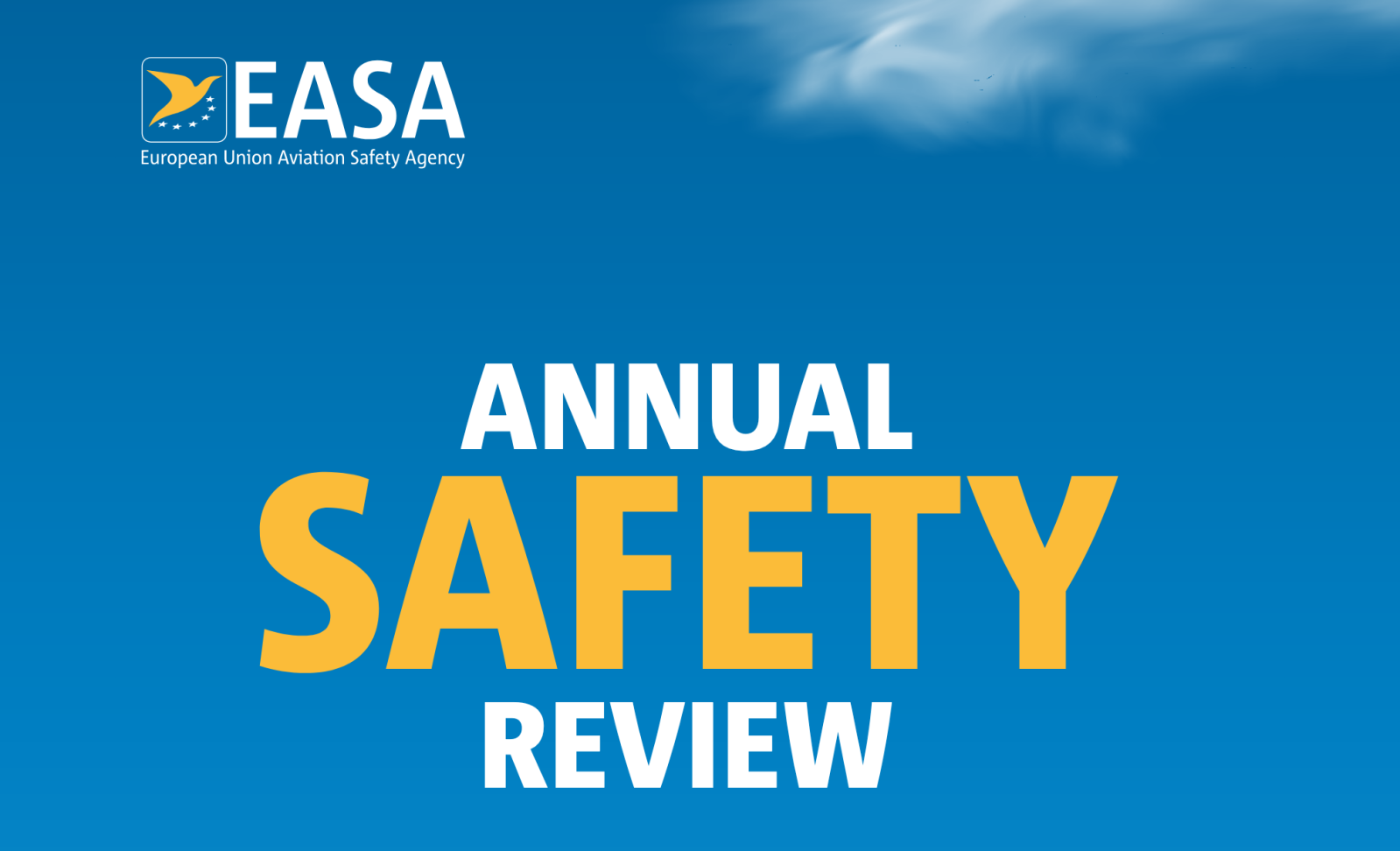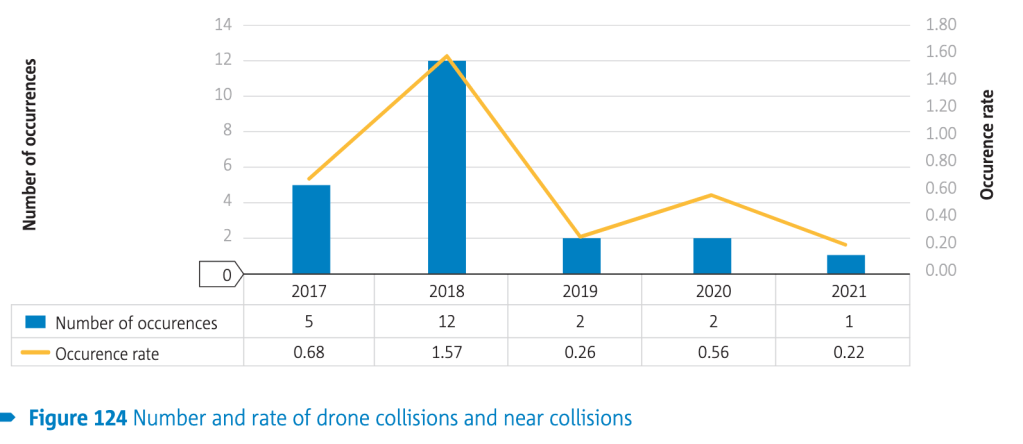
The European Union’s air transport regulator, the European Aviation Safety Agency (EASA), has issued its latest annual safety review, which in terms of drones shows a drop in incidents and accidents across the board.
The EASA’s safety report for 2021 reflects a general improvement across all modes of aircraft and activity, with drones showing marked improvement as part of that. The findings indicate that since 2018, the incidence of UAVs involved in total accidents and those qualified as “serious” had decreased from two in 2019 and one in 2020 to zero last year.
“(A)n UAS occurrence refers to accidents and serious incidents where at least one UAS was involved, and the event resulted in an airborne collision or near airborne collision with an UAS,” the report says. “The decrease in the number of (instrument flight rules) flights is reflected in the increase in the occurrence rate in 2020. In 2021, one of drone collisions and near collisions was recorded.”
Read: EU regulator releases initial set of rules for UAM and air taxi operations
The gradual reduction of EASA incident or accident figures involving drones probably relies in good part on the increasing sophistication of object detection and avoidance sensors on craft themselves, as well as maturing piloting experience and skills across the EU.
Perhaps also playing a role was the 2019 publication of European-wide “rules and procedures for the operation of unmanned aircraft,” the report notes, as well as diminished activity – particularly among air travelers – resulting from the COVID-19 pandemic.

The EASA says both resumed passenger air transport – now up to 85% of 2019 levels – and the increased access and use of drones is again raising the risk of higher incident rates returning as more people take to the skies in different ways.
“The potential for an airborne collision between an unmanned aircraft system (UAS) and other aircraft is an area of growing safety concern, due to the increasing accessibility of UAS,” the report said, noting those stats will also increase when drone operators being filing incident and accident reports with the regularity that aircraft pilots and air traffic management/air navigation services (ATM/ANS) workers do.
“It is important to note that UAS-related reports are mainly provided by the (piloted plane) and ATM/ANSdomains,” it adds. “As soon as reports from UAS operators become more common and accurate information on unauthorized UAS flying in the environment becomes available, the issues for the ATM/ANS domain, relating to this type of aircraft will become more apparent.”
FTC: We use income earning auto affiliate links. More.



Comments